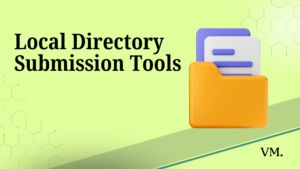Are you struggling to gain quality backlinks for your website? Broken link building is a powerful strategy that can help you acquire valuable links while improving the web for everyone. Imagine turning dead links into opportunities for your site, boosting your SEO, and enhancing your online authority—all without the frustration of cold outreach. This comprehensive tutorial will guide you through the process of broken link building, ensuring you can implement this effective technique efficiently.
What is Broken Link Building?
Broken link building is a link-building strategy that involves identifying broken links on websites and reaching out to the site owners to suggest replacing those links with relevant content from your own site. This not only helps improve the user experience on the web by fixing dead links but also provides you with an opportunity to earn high-quality backlinks.
Reasons You Need to Know Broken Link Building
Understanding broken link building is essential for anyone looking to improve their website’s SEO and authority. Here are some compelling reasons why this skill is vital:
- Enhance SEO: Acquiring backlinks from reputable sites boosts your site’s authority in search engine rankings.
- Improve User Experience: Fixing broken links contributes to a better browsing experience for users.
- Leverage Existing Content: Utilize your existing content to gain links without creating new material.
By mastering broken link building, you can effectively turn a common web issue into a strategic advantage for your website.
Step-by-Step Instructions to Master Broken Link Building
This unique process will guide you through identifying and capitalizing on broken links effectively. Follow these steps to start your journey:
- Identify Broken Links
- Analyze Relevant Content
- Craft Your Outreach Message
- Follow Up
Now, let’s delve deeper into each step of this tutorial.
Step 1: Identify Broken Links
Begin by using tools like Ahrefs or Check My Links to find broken links on relevant websites in your niche. Enter the URL of a target site and scan for any dead links.
Step 2: Analyze Relevant Content
Once you’ve identified broken links, analyze your own content to find suitable replacements. Ensure that the content you offer is relevant and valuable to the audience of the site you’re targeting.
Step 3: Craft Your Outreach Message
Compose a concise and polite outreach email to the website owner. Mention the broken link you’ve found, provide context about your content, and suggest it as a replacement.
Step 4: Follow Up
If you don’t receive a response within a week or two, send a gentle follow-up email. Persistence can pay off in outreach efforts.
Key Considerations For Successfully Implementing Broken Link Building
When engaging in broken link building, consider these key insights:
- Quality Over Quantity: Focus on obtaining links from high-authority sites rather than numerous low-quality ones.
- Personalization Matters: Tailor your outreach messages to each recipient for better engagement.
- Be Patient: Not every outreach will yield results; persistence is key in this process.
Taking it to the Next Level: How to Scale Your Efforts
Alternatives to Broken Link Building
If broken link building isn’t yielding results or fits poorly with your strategy, consider these alternatives:
- Guest Blogging: Write articles for other blogs in exchange for backlinks.
- Resource Page Link Building: Reach out to sites that curate resources in your niche and suggest adding your content.
- Skyscraper Technique: Create superior content compared to existing articles and reach out to those linking to the inferior versions.
The Reality of Link Rot
Link rot is a pervasive issue in the realm of digital content, with significant implications for website owners and marketers. Recent studies reveal alarming statistics regarding link decay:
- 8.03% of all links break within the first 3 months after being created, highlighting the immediate vulnerability of newly acquired backlinks.
- Over a span of 7 years, approximately 44% of links are lost, indicating that nearly half of all backlinks may become ineffective over time.
- A broader analysis by Ahrefs found that 66.5% of links to sampled websites have rotted over the last nine years, with a total of 74.5% considered lost due to various issues such as crawl errors and dropped pages.
These statistics underscore the reality that maintaining a robust backlink profile requires ongoing effort and attention.
Reasons for Link Loss
Understanding why links are lost is essential for developing effective strategies to mitigate link rot. The primary reasons include:
- Links Removed (50.9%): The most common cause of link loss is the deliberate removal by webmasters or content creators.
- Crawl Errors (31.8%): Technical issues, such as server downtime or inaccessible pages, account for nearly a third of lost links.
- Redirects and Not Found Errors: Other contributing factors include 301/302 redirects (5.99%) and pages returning a “not found” status (4.11%)—each representing additional hurdles in maintaining link integrity.
The Importance of Quality Links
The quality of backlinks plays a significant role in their longevity. Websites with higher Domain Authority (DA) tend to experience lower rates of link loss compared to those with lower DA:
- Websites with a DA over 45 lost only 11% of their links in the first year, while sites with a DA under 45 experienced a loss rate of 16% during the same period.
- After two years, 23.42% of links to low DA sites were lost compared to just 15.59% for high DA sites, indicating that higher authority sites attract more stable backlinks.
These findings suggest that focusing on acquiring links from reputable sources can enhance the sustainability of your backlink strategy.
Challenges in Link Building
Despite recognizing the value of backlinks, many marketers face significant challenges in acquiring them:
- A staggering 94% of published web pages have zero backlinks, illustrating the competitive nature of link building.
- Only 2.2% have more than one backlink, which emphasizes how difficult it is to gain traction in this area.
- Furthermore, 70% of marketers do not guarantee the volume or metrics associated with their link-building efforts, reflecting uncertainty in achieving desired outcomes.
This data highlights the need for innovative strategies like broken link building to effectively secure valuable backlinks.
The statistics surrounding broken link building reveal both challenges and opportunities within the SEO landscape. With a significant portion of links experiencing decay over time, it is essential for marketers to adopt proactive strategies to maintain and grow their backlink profiles. By understanding the dynamics of link rot, focusing on quality sources, and leveraging methods like broken link building, marketers can navigate these challenges effectively and enhance their overall SEO performance.
Wrapping Up and My Experience With Broken Link Building
Mastering broken link building can significantly enhance your website’s authority and visibility online. By following these steps and implementing best practices, you’ll be well on your way to leveraging this effective strategy. Having utilized this method successfully in my own projects, I can attest that it not only improves SEO but also fosters relationships within your niche community. Start today, and watch your backlink profile grow!
FAQ
Broken link building is a strategic SEO technique that involves identifying dead or broken links on external websites and reaching out to the site owners to suggest replacing those links with relevant content from your own site. This approach not only helps improve the user experience by fixing broken links but also allows you to acquire high-quality backlinks, which are essential for enhancing your website's authority and search engine rankings.
The importance of broken link building lies in its dual benefits. First, it addresses the issue of link rot—where links become outdated or lead to non-existent pages—thereby improving the overall quality of the web. Second, it provides an opportunity for website owners to gain backlinks without having to create new content from scratch. By leveraging existing content and connecting with other site owners, you can create a win-win situation that enhances both your SEO efforts and the user experience for visitors.
Finding broken links is a critical first step in executing a successful broken link building campaign. There are several effective methods and tools you can use:
- SEO Tools: Utilize tools like Ahrefs, SEMrush, or Moz to scan websites for broken links. These tools allow you to input a URL and generate a report that highlights any dead links associated with that page.
- Browser Extensions: Tools like Check My Links (a Google Chrome extension) can help you quickly identify broken links on any webpage you visit. This is particularly useful for manual searches on resource-rich pages or competitor sites.
- Competitor Analysis: Analyze your competitors’ backlink profiles using SEO tools to discover broken links on their sites. This can reveal opportunities where you can offer your content as a replacement.
- Search Operators: Use Google search operators to find pages that might have broken links. For example, searching for “keyword + inurl:resources” can help locate resource pages that may contain dead links.
By employing these strategies, you can compile a list of potential targets for your outreach efforts.
Crafting effective outreach emails is crucial for the success of your broken link building campaign. Here are some best practices:
- Personalization: Always personalize your emails by addressing the recipient by name and mentioning their website or specific content they have published. This shows that you have taken the time to research their site and are genuinely interested in collaborating.
- Clear Subject Line: Use a subject line that clearly states the purpose of your email, such as “Fixing Broken Links on [Website Name].” A straightforward subject line increases the chances of your email being opened.
- Introduce Yourself: Start your email with a brief introduction about who you are and why you're reaching out. Highlight any relevant credentials or connections that establish your authority in the topic area.
- Mention the Broken Link: Clearly point out the specific broken link you’ve identified on their site, including where it is located (e.g., within an article or resource page). Providing a screenshot can be helpful as well.
- Offer Your Content as a Replacement: After addressing the broken link, suggest your content as a suitable replacement. Explain how your content is relevant and valuable to their audience, emphasizing any unique features such as updated statistics or comprehensive insights.
- Keep It Concise: While it's important to provide enough information, keep your email concise and focused. Aim for clarity without overwhelming the recipient with too much detail.
- Include a Call to Action: Encourage them to review your suggested content and consider replacing the broken link with it. Make it easy for them by providing direct links to both the broken link and your replacement content.
- Follow Up: If you don’t receive a response within a week or two, send a polite follow-up email reiterating your offer and expressing continued interest in helping them fix their site.
By following these best practices, you can enhance your outreach effectiveness and increase the likelihood of securing valuable backlinks through broken link building.
Measuring the success of your broken link building campaign involves tracking various metrics that reflect both outreach effectiveness and overall impact on your website's SEO performance:
- Response Rate: Track how many outreach emails receive responses compared to how many were sent out. A higher response rate indicates effective messaging and targeting.
- Link Acquisition: Monitor how many new backlinks you successfully secure as a result of your outreach efforts. This metric directly reflects the effectiveness of your campaign in achieving its primary goal.
- Domain Authority Changes: Keep an eye on changes in your website’s Domain Authority (DA) over time using tools like Moz or Ahrefs. An increase in DA often correlates with successful link acquisition.
- Referral Traffic: Analyze referral traffic from newly acquired backlinks using Google Analytics or similar tools. Increased traffic from these sources indicates that users are engaging with your content after clicking through from linked sites.
- Keyword Rankings: Monitor changes in keyword rankings related to pages where you've secured backlinks through broken link-building efforts. Improved rankings suggest that these backlinks are positively impacting SEO performance.
- Backlink Profile Health: Regularly audit your backlink profile using SEO tools to ensure that newly acquired links are healthy and contributing positively to your overall strategy.
By systematically tracking these metrics, you can gain insights into what works well in your broken link-building campaigns and identify areas for improvement in future efforts.
Implementing a successful broken link building strategy requires careful planning and execution; however, there are several common pitfalls that can derail efforts:
- Targeting Low-Quality Sites: Focusing solely on quantity rather than quality when selecting target sites can lead to securing backlinks from low-authority domains, which may not provide significant SEO value.
- Generic Outreach Emails: Sending out generic emails without personalization can result in low response rates. Tailoring each message increases engagement and demonstrates genuine interest in collaboration.
- Neglecting Content Quality: If the replacement content you offer is subpar or irrelevant, site owners are unlikely to replace their existing links with yours. Ensure that any suggested content is high-quality, valuable, and relevant to their audience.
- Ignoring Follow-Ups: Failing to follow up on initial outreach attempts can lead to missed opportunities for securing backlinks. A polite reminder can prompt responses from busy webmasters who may have overlooked your initial email.
- Not Monitoring Results: Neglecting to track results from outreach efforts prevents you from understanding what strategies work best over time, hindering future improvements in your approach.
- Being Too Pushy: While it’s important to advocate for your content as a replacement, being overly aggressive or demanding can alienate potential collaborators. Maintain professionalism and politeness throughout all communications.
Broken link building stands out among various link-building strategies due to its unique approach of addressing existing issues on the web. Unlike traditional methods, such as guest blogging or content marketing, which often require creating new content or engaging in extensive outreach, broken link building focuses on leveraging existing broken links as opportunities for backlinks.
- Efficiency: By targeting dead links, you can save time and resources that would otherwise be spent on creating content solely for the purpose of acquiring links. Instead, you can repurpose existing content to fill the gap left by a broken link.
- Value Proposition: This strategy provides value not only to your website but also to the site owner whose broken links you are addressing. By suggesting a replacement for their dead links, you enhance their user experience while gaining a backlink in return.
- Higher Success Rate: Broken link building often yields a higher success rate compared to other methods because webmasters are generally more receptive to fixing issues on their sites. They appreciate being informed about broken links and may be more inclined to accept your suggestions.
- Long-Term Benefits: The backlinks acquired through broken link building tend to be more durable since they are earned by providing a solution to an existing problem. This contrasts with some other strategies that may yield temporary results or require ongoing effort to maintain.
Overall, broken link building is a highly effective and ethical strategy that complements other link-building techniques, allowing marketers to diversify their approaches and maximize their SEO efforts.
When engaging in broken link building, the type of content you offer as a replacement is critical for success. Here are several types of content that tend to work well:
- Comprehensive Guides: In-depth guides that cover a topic thoroughly are often valuable replacements for broken links. If the original link pointed to an outdated guide, creating an updated version with fresh insights and data can attract attention from webmasters looking for reliable resources.
- Infographics: Visual content like infographics can be highly appealing as replacements for broken links, especially if the original content was data-driven or informative. Infographics are easily shareable and can enhance the visual appeal of a webpage.
- Research Studies or Case Studies: Original research or case studies that provide unique insights into a specific topic can serve as excellent replacements. This type of content adds credibility and authority, making it attractive for webmasters seeking high-quality resources.
- Listicles: Curated lists of resources, tools, or tips relevant to the topic of the broken link can be effective replacements. Listicles are easy to read and digest, making them appealing to both webmasters and their audiences.
- Tutorials and How-To Articles: Practical guides that offer step-by-step instructions on relevant topics can replace broken links effectively. These articles provide immediate value to users seeking solutions or information.
- Videos: If appropriate for your niche, video content can also serve as a replacement for broken links. Videos are increasingly popular as learning tools and can engage users in ways that text-based content may not.
By focusing on high-quality, relevant content that addresses the needs of both the target website and its audience, you increase your chances of successfully replacing broken links and acquiring valuable backlinks.
In a crowded inbox, crafting outreach emails that stand out is essential for successful broken link building campaigns. Here are several strategies to enhance your outreach effectiveness:
- Personalization: Tailor each email specifically to the recipient by including their name, mentioning their website's name, and referencing specific content they have published. Personalization demonstrates genuine interest and effort on your part.
- Compelling Subject Lines: Create attention-grabbing subject lines that highlight immediate value or urgency. For example, “Quick Fix: Broken Link on [Website Name]” immediately informs the recipient about the email's purpose.
- Value Proposition Upfront: Clearly articulate how your suggested replacement will benefit them—whether it’s improving user experience or enhancing their site’s authority—early in the email.
- Be Concise and Direct: Keep your message clear and focused without overwhelming recipients with too much information. A concise email is easier for busy webmasters to read and respond to promptly.
- Use Bullet Points: If applicable, use bullet points to highlight key information succinctly (e.g., where the broken link is located and what your proposed solution is). This format makes it easier for recipients to digest important details quickly.
- Include Supporting Evidence: If relevant, provide evidence supporting your claims about your content’s quality—such as metrics indicating its popularity or engagement levels (e.g., social shares or backlinks).
- Call-to-Action (CTA): End with a clear call-to-action encouraging them to check out your suggested replacement link or ask if they have any questions about it.
- Follow Up Respectfully: If you don’t receive a response within a week or two, consider sending a polite follow-up email reiterating your offer and expressing continued interest in helping them improve their site.
By implementing these strategies into your outreach emails, you increase the likelihood of capturing attention and receiving positive responses from webmasters regarding your broken link suggestions.
Several tools can significantly enhance your efficiency and effectiveness when implementing a broken link building strategy:
- Ahrefs: Ahrefs is one of the most popular SEO tools available today, offering comprehensive features for finding broken links on any website. Its Site Explorer tool allows users to analyze backlink profiles and identify 404 errors easily.
- SEMrush: Similar to Ahrefs, SEMrush provides robust tools for backlink analysis and competitor research. Its Site Audit feature helps identify broken links on your own site while also allowing you to explore competitors’ backlink profiles.
- Check My Links: This Google Chrome extension allows users to quickly scan any webpage for broken links while browsing the internet. It highlights dead links in red, making it easy for you to compile lists of potential targets during manual searches.
- LinkMiner: LinkMiner is another browser extension that helps find broken links on websites while providing additional data about those links’ metrics (such as Domain Authority). This tool is useful when conducting outreach research efficiently.
- Google Search Console: For monitoring your own website’s health regarding broken links, Google Search Console provides insights into crawl errors and issues related specifically to 404 pages on your site.
- BuzzStream: BuzzStream is an outreach management tool designed specifically for managing relationships with bloggers and webmasters during outreach campaigns—making it easier to track progress and communications over time.
- Dead Link Checker: This online tool allows users to check multiple URLs at once for dead links quickly—ideal when compiling lists of potential targets across various websites in one go.
By utilizing these tools effectively throughout different stages of your broken link building efforts—from identifying opportunities through outreach—you can streamline processes while maximizing results in securing valuable backlinks effectively.



